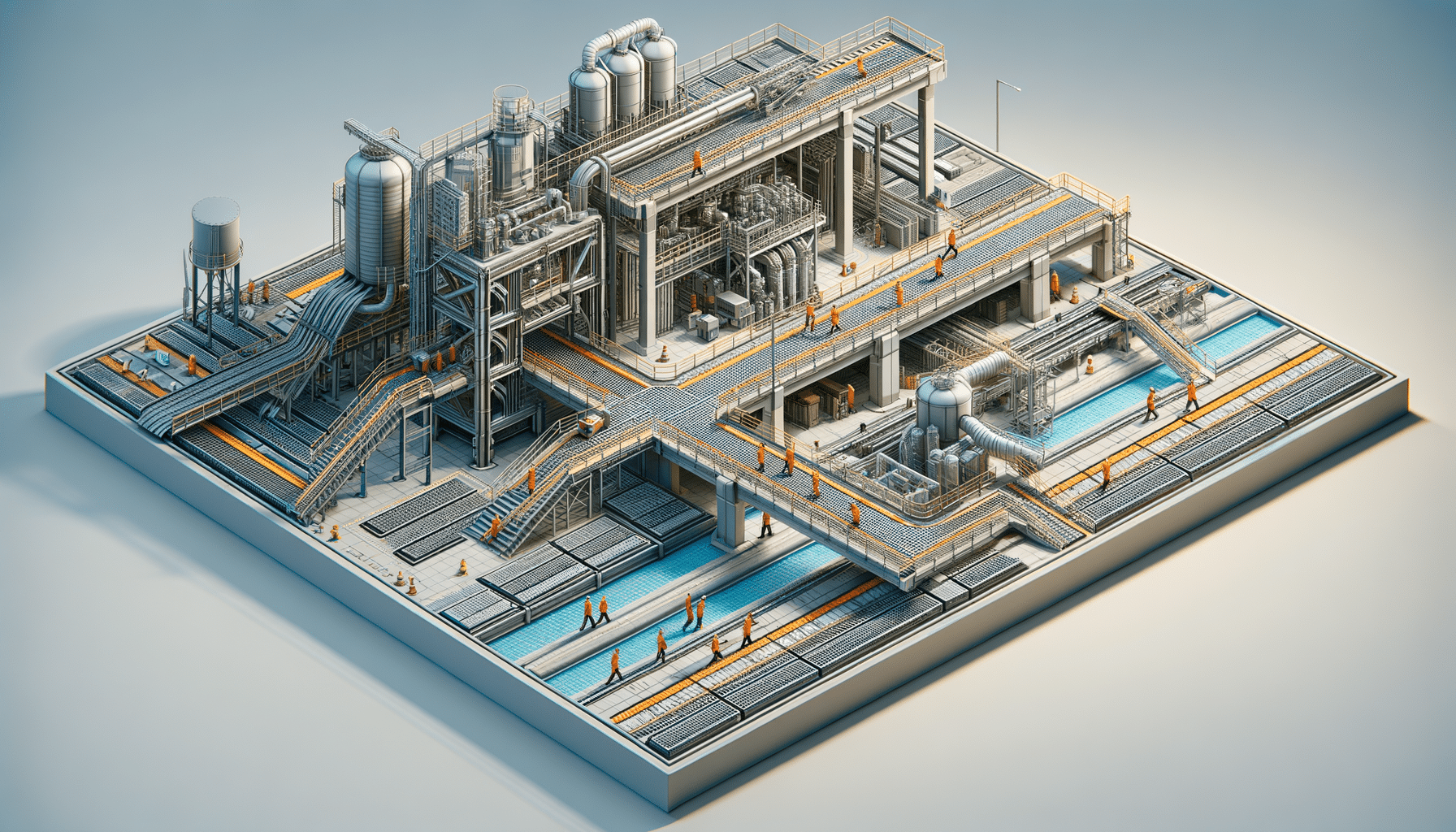
Fiberglass Grating: The Durable, Lightweight Solution for Industrial and Commercial Applications
Fiberglass Grating Installation
Fiberglass grating installation is a straightforward process that requires careful planning and execution to ensure safety and longevity. The first step is to assess the site where the grating will be installed, considering factors such as load requirements, environmental conditions, and potential chemical exposure. Once the site is prepared, the grating panels can be cut to size using standard saws equipped with carbide-tipped blades.
During installation, it is essential to ensure that the supporting structure is adequately prepared and capable of handling the load. The panels are typically laid out on the support structure and fastened using clips or hold-down clamps, which help prevent movement and provide stability. It is crucial to follow the manufacturer’s guidelines and local building codes to ensure compliance and safety.
One of the advantages of fiberglass grating is its lightweight nature, which simplifies the installation process. Unlike steel grating, fiberglass does not require heavy lifting equipment, making it more cost-effective and less labor-intensive. Additionally, fiberglass grating is resistant to corrosion, reducing the need for protective coatings and prolonging the lifespan of the installation.
- Assess site conditions and load requirements
- Cut panels to size using appropriate tools
- Ensure supporting structure is prepared
- Fasten panels with clips or clamps
- Follow manufacturer guidelines and building codes
Overall, fiberglass grating installation is a practical choice for industries seeking a durable, low-maintenance solution that offers both safety and efficiency.
FRP Grating Benefits
Fiber Reinforced Plastic (FRP) grating offers numerous benefits that make it an attractive option for various applications. One of the most notable advantages is its corrosion resistance. Unlike traditional materials such as steel, FRP does not rust or degrade when exposed to harsh chemicals or moisture, making it ideal for environments like chemical plants, wastewater treatment facilities, and marine settings.
Another significant benefit of FRP grating is its lightweight nature. This characteristic not only simplifies installation but also reduces transportation costs. Despite its light weight, FRP grating is incredibly strong, capable of supporting heavy loads without compromising safety. Its strength-to-weight ratio is one of the highest among grating materials, which contributes to its widespread use in industrial settings.
Safety is also a critical factor, and FRP grating excels in this area. It is non-conductive, reducing the risk of electrical hazards, and its anti-slip surface provides excellent traction, even in wet or oily conditions. This makes FRP grating a suitable choice for walkways and platforms where safety is paramount.
- Corrosion resistance for harsh environments
- Lightweight yet strong, easy to install
- Non-conductive, reducing electrical hazards
- Anti-slip surface for enhanced safety
In summary, the benefits of FRP grating make it a smart investment for businesses seeking a reliable, long-lasting, and safe grating solution.
Types of Fiberglass Grating
Fiberglass grating comes in several types, each designed to meet specific needs and applications. The most common types include molded and pultruded grating, each offering unique properties that cater to different environments and requirements.
Molded fiberglass grating is created by a process that involves laying fiberglass roving in a mold and saturating it with resin. This type of grating is known for its high strength and corrosion resistance, making it suitable for environments where exposure to chemicals or moisture is a concern. Molded grating typically features a grid-like pattern, providing excellent traction and drainage.
On the other hand, pultruded fiberglass grating is manufactured by pulling continuous fiberglass strands through a resin bath and then through a heated die. This process results in a grating that is exceptionally strong and stiff, ideal for applications requiring high load-bearing capacity. Pultruded grating is often used in industrial settings where heavy equipment or machinery is present.
- Molded grating: High strength, corrosion-resistant, excellent traction
- Pultruded grating: High load-bearing capacity, strong and stiff
Additionally, fiberglass grating is available with various surface options, such as grit top or smooth top, to further enhance safety and performance. These options allow businesses to select the grating type that best suits their specific needs, ensuring optimal performance and safety in their operations.
Understanding the different types of fiberglass grating and their applications can help businesses make informed decisions when selecting the right grating for their projects.


